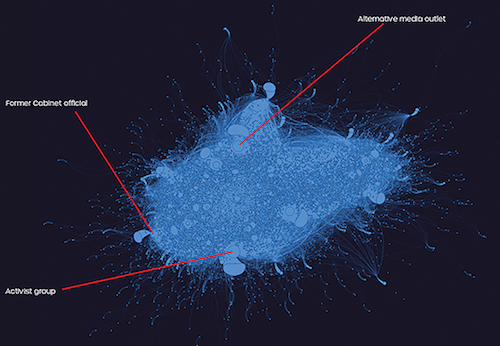 Eric Blankenbaker and Keisha McClellan co-authored this article. Eric Blankenbaker and Keisha McClellan co-authored this article. |
Call it the Year of Union Wins: 2023 saw UAW, SAG-AFTRA, Teamsters, airline pilots, healthcare workers, baristas, teachers and technicians win concessions from management. All told, some 453,000 workers walked off the job in 312 separate actions.
The fact that unions prevailed in 2023 makes it likely even more of them will strike in 2024.
But executives needn’t fear the contest. By leveraging AI to analyze the other side, anticipate its demands and test-drive the strategy, executives can arrive at the bargaining table positioned to negotiate that rarest of outcomes, a deal that both labor unions and shareholders can celebrate.
We know this to be true because we helped America’s bedrock brands secure win-wins in 2023. What we learned from our engagements promises to transform not just labor relations but also brand reputation management.
Let’s break down the steps.
Understand the narrative
What’s the story being told about your company? Who’s telling it? How is it spreading? And who’s listening?
Successful negotiations demand that, before entering them, you understand the narrative about your company. AI can help.
To give one manufacturer that awareness, we used AI models designed to detect risk to analyze the union’s reach and impact on social as well as conventional media channels. We could then visualize the members, workers, activists and government officials following the union’s spokesperson. We could see which influencers, reporters and bots were inclined to amplify his message and which of his messages got traction. We could also see which peripheral players were distorting those messages in the endless social and media feedback loop, as well as the channels they favored.
|
|
|
AI-driven analysis of one recent high-profile corporate crisis. Analysis shows online provocateurs and political players hijacking the narrative to create a negative feedback loop and sow discord. Source: Blackbird.AI |
The relationships mapped by this analysis enabled us to develop a media strategy capable of ensuring our client’s position was modified to meet the union narrative where it was. We advised them to allocate resources only to the channels and voices that key stakeholders already followed. Being able to discern network static from narrative substance, we focused our client on providing thoughtful responses and prevented sabotaging success by succumbing to provocation.
Perhaps most importantly, such an analysis equips us to defuse the spread of misinformation. In the wake of an environmental and safety incident, for example, AI-backed network analysis revealed that labor activists—not reporters—were spreading a tale of corporate greed, insisting that profits prevailed over employee safety. Social-media-savvy politicians were quick to exploit this narrative to advance their agendas with key constituencies. Cable-news outlets then played up the partisan exchanges on Twitter.
By knowing exactly who stood to benefit from contentious labor relations, we could anticipate where disinformation was most likely to crop up and deploy a position that acknowledged the concerns being raised and put into place corrective actions before the false narratives could destabilize upcoming negotiations.
Know the other side
Every negotiator hopes to bargain from a position of strength. That means knowing exactly who you’re dealing with ahead of time. What motivated workers to collectivize? What advantages to membership do they see—and what disadvantages? And perhaps most importantly: What will they consider a huge win coming out of the next negotiation?
Despite the highly publicized nature of New Labor’s demands, the answers to these questions aren’t always obvious. AI can take out the guesswork.
For example, we’ve used AI to help clients predict critical issues in upcoming labor negotiations. In one case, after conducting a thorough analysis of social chatter and media coverage about healthcare benefits, the tool revealed that paid sick leave was a hot-button issue. In what both the union and our client considered a win, workers walked away with what they came for: paid sick leave.
| This article is featured in O'Dwyer's Jan. '24 Crisis Communications & PR Buyer's Guide Magazine (view PDF version) |
Test-drive your narrative
Successful negotiations ultimately rely on the relationship between management and labor and, by extension, the community where employees live. AI can’t cure a toxic relationship. However, it can help maintain respectful and constructive relations by ensuring that unwelcome news is delivered as sensitively as possible.
We saw this happen when a client closed a long-standing facility that had a significant positive impact on its community. Company leaders sought to justify the closing of it by appealing to employees’ sense of reason: The facility was old, and upgrading it would be prohibitively expensive, so the most financially sound thing to do was close it.
We didn’t need AI to tell us this was the wrong approach to take. If the pandemic taught us anything, it’s that emotion—not facts—shapes public perception. But which emotional appeal was likeliest to soften the blow and stave off unwanted publicity? The plant had a strong union and a long history of labor activism. Workers were anxious about their options and fearful about the future of their community. Moreover, with a reputation for valuing its employees, the company had engendered high worker expectations.
The communications approach we deployed succeeded in de-escalating the situation for three reasons:
- We put ourselves in the shoes of the affected workers and members of the community, drawing on their experience to create several different versions of the announcement.
- We made sure their language and tone affirmed the values that the company so publicly stood for.
- By using learnings from our AI models to forecast their impact, we selected the version of the announcement that landed with the least damaging impact.
Level the playing field
The rise of New Labor can be attributed to its use of both grassroots organizing tactics and digitally savvy media manipulation.
But with AI, even old-school executives can rise to the challenges posed by lightning-speed information transfer and viral feedback loops—both online and within the halls of the company. With AI-guided media analysis, leaders can not only see what labor is saying but also tailor their communications strategies to use the same machinery labor uses to reach their supporters. With intelligence on peripheral actors, companies can anticipate and mitigate collateral damage. With insight into labor’s primary motivations and existential needs, companies can enter negotiations prepared to address them, increasing the likelihood of success.
Knowledge is power. With AI, management can better understand precisely what it needs to meet a newly empowered labor movement where it stands and on equal footing.
***
Eric Blankenbaker is an Executive Vice President at Weber Shandwick. Keisha McClellan is a Vice President at Weber Shandwick.



 There’s a fine line between newsjacking and taking advantage, aka ambulance chasing. Our job as PR professionals is to tread it carefully.
There’s a fine line between newsjacking and taking advantage, aka ambulance chasing. Our job as PR professionals is to tread it carefully. PR firms need to be mindful of ways their work product may be protected by the attorney-client privilege whenever working with a client’s internal legal team or its external legal counsel.
PR firms need to be mindful of ways their work product may be protected by the attorney-client privilege whenever working with a client’s internal legal team or its external legal counsel. Manuel Rocha, former US ambassador and intenational business advisor to LLYC, plans to plead guilty to charges that he was a secret agent for Cuba.
Manuel Rocha, former US ambassador and intenational business advisor to LLYC, plans to plead guilty to charges that he was a secret agent for Cuba. CEO mentoring is an often-overlooked aspect of why CEOs are able to make good decisions, and sometimes make bad ones—all of which intersects with the role and duties of a board.
CEO mentoring is an often-overlooked aspect of why CEOs are able to make good decisions, and sometimes make bad ones—all of which intersects with the role and duties of a board.  How organizations can anticipate, prepare and respond to crises in an increasingly complex world where a convergent landscape of global challenges, threats and risks seem to arrive at an unrelenting pace.
How organizations can anticipate, prepare and respond to crises in an increasingly complex world where a convergent landscape of global challenges, threats and risks seem to arrive at an unrelenting pace.


 Have a comment? Send it to
Have a comment? Send it to 
No comments have been submitted for this story yet.